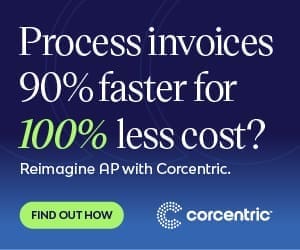Receiving A Payments: An Order-To-Cash Software Primer
Corcentric

ACCOUNT RECEIVABLE PROCESS FLOW
The smooth functioning of any business requires diligent oversight of the Accounts Receivable process. When business receives money for goods or services supplied, it entails using either an invoicing system or manual bookkeeping to log these transactions. As one might be aware, problems can arise with manual accounting, including the risk of error and cost incurred to employ extra staff. Thus, investing in an Order To Cash (OTC) platform such as software can resolve these issues, making the process more efficient and accurately reflect the transactional nature of business.
This Order to Cash primer aims to provide executive-level understanding of how adopting an OTC software solution can impact an organizations efficiency and its receivable process. In doing so, it will explore the main features of an OTC platform and demonstrate how an organization can use it to improve the accounting function.
Overview of the Receivable Process
The Accounts Receivable process involves logging the payment information of customers, monitoring customer payment performance and collecting payments. An efficient receivable process generally involves the following steps:
1. Electronic Invoicing: Invoices should be accounted for by creating both an electronic record and paper form, the latter being sent to the customer via mail or email.
2. Payment Cycle Monitoring: Invoices should be tracked for delayed payment. Improved customer experience and optimised operational processes should be the target of an efficient process.
3. Payment Collection: The stages of payment collection should be optimised and timely payments should be encouraged by offering rewards or penalties.
Benefits of Order-To-Cash Software Solutions
An Order to Cash platform automates and streamlines the above processes. This solution:
*Reduces the manual effort typically required to create, maintain and process invoices.
*Generates customized automated invoices with secure payment options.
*Dramatically reduces errors associated with manual accounting.
*Allows necessary data to be captured quickly and accurately.
*Tracks invoices in real-time and recommends any proactive measures.
*Improves overall receivable management and communication between buyers and suppliers.
*Provides an audit trail to ensure compliance with legislative regulations.
*Provides flexible payment methods, including credit card, mobile wallet, and direct debit options.
Using Order-To-Cash Software for Receivable Processes
In terms of setting up an automated OTC system, the first step is to obtain package, such as software, from vetted provider. The provider should be able to provide training and support for both the software and overall process.
Thereafter, the setup process should include the steps outlined below:
1. Gaining an understanding of the business processes and workflow. This should include an in-depth study of the existing payment systems.
2. Customizing the OTC package. This includes fine-tuning the invoicing and payment modules to optimise the business flow.
3. Identifying potential improvements in the OTC processes. This includes areas of cost optimisation, resource allocation, and risk management.
4.Integrating the OTC package with existing systems. This may include integrating it with an existing financial software, customer databases and payment gateways.
5. Concluding the setup process by formulating policies and procedures and training employees on the use of the software.
The bottom line is that Order to Cash software is great alternative for tracking offers, invoices, and payments. businesses should consider automated OTC solutions to improve their receivable management and optimise their resources. In essence, this platform helps business to receive payments more quickly, efficiently and accurately.

